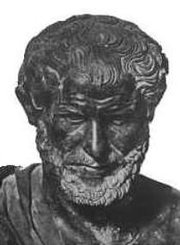History of biology
|
|
The history of biology dates as far back as the rise of various civilization as classic philosophers did their own ways of biology as a system of understanding life.

| History of science | ||
| Overview | ||
| Theories and sociology of the history of science | ||
| Pre-experimental science | ||
| Science in early cultures | ||
| History of Medieval science | ||
| Scientific revolution | ||
Natural Sciences
| ||
| Social sciences | ||
| Interdisciplinary | ||
| History of pseudoscience | ||
Timelines for scientific
|
Formed by combining the Greek βίος (bios), meaning 'life', and λόγος (logos), meaning 'study of', the word "biology" in its modern sense seems to have been introduced independently by Karl Friedrich Burdach in 1800, Gottfried Reinhold Treviranus (Biologie oder Philosophie der lebenden Natur, 1802) and by Jean-Baptiste Lamarck (Hydrog鯬ogie, 1802). The word itself appears in the title of Volume 3 of Michael Christoph Hanov's Philosophiae naturalis sive physicae dogmaticae: Geologia, biologia, phytologia generalis et dendrologia, published in 1766.
Aristotle is one of the most prolific natural philosophers of antiquity. He made countless observations of nature, especially the habits and attributes of plants and animals in the world around him, which he devote considerable attention to categorizing.
In the 19th century the area of genetics developed, when the Austrian monk Gregor Mendel formulated his laws of inheritance published in 1866. However, his work was not recognized for a few decades afterward. The other important scientist that influenced this field was the British scientist Charles Darwin, who was encouraged to publish his thought in the field by the independent work of Alfred Russel Wallace.
Darwin's famous work On the Origin of Species (1859) describes natural selection, the primary mechanism for evolution. Implications of evolution on fields outside of pure science have led to both opposition and support from different parts of society.
By 1953 James Watson and Francis Crick clarified the basic structure of DNA, the genetic material for expressing life in all its forms3.
After the success of the discovery of the structure of DNA, Crick turned to the problem of consciousness; in the meantime, the studies of developmental biology came to the fore as unsolved problems. Clones of both plants and animals were attempted, with some success, but with attendant ethical questions. In particular, totipotent stem cells have come to be recognized as a fundamental object of study for the understanding of developmental biology, and for medical therapies.
See also
Notes
Note 3: James D. Watson and Francis H. Crick. "Letters to Nature: Molecular structure of Nucleic Acid." Nature 171, 737?738 (1953). (http://www.nature.com/genomics/human/watson-crick/)

